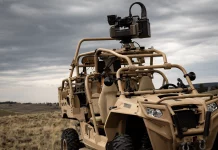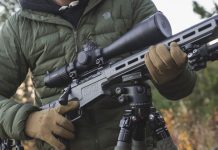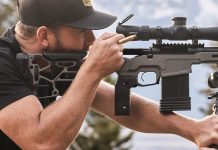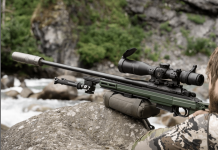Houston, Texas – March 28, 2022 – U.S. LawShield®, industry leader and America’s largest provider of Legal Defense for Self Defense® coverage, offers state-specific Travel Guides and top tips for gun owners as they prepare to travel in the coming months.
According to Kirk Evans, President of U.S. LawShield, “Before you head south for Spring Break, trek to Grandma’s for Easter, or hit the road for your summer trip, we thought a quick refresher in common travel issues for gun owners would be helpful. Licenses or permits to carry a handgun aren’t like driver’s licenses and might not be honored depending on what state you find yourself in,” he said. “We offer resources to help you understand the ins and outs of traveling with your gun.”
U.S. LawShield members can take the guesswork out of traveling with a firearm by contacting their Independent Program Attorney at the toll-free number on the back of their membership card. State-specific travel guides are accessible to everyone on the U.S. LawShield website to help folks prepare for upcoming travel at resources.uslawshield.com/travel-guide. “Remember, not knowing the law is not a valid defense,” stated Evans.
Check out the U.S. LawShield YouTube video “Get Packin’: Traveling with Guns,” presented by Independent Program Attorneys Richard Hayes and Emily Taylor. Discussion includes essential information needed to stay safe and responsible while traveling with firearms.
Traveling with a Firearm
Some may think driving is the best option when traveling with a firearm. Unfortunately, that is not always the case. Gun laws vary from state to state. Some states ban certain types of ammunition, others have magazine capacity restrictions, and some even have local laws that depart from the general rule of thumb. Because you are subject to a state’s laws when you are in that state, if you break their laws, you could be committing a crime—whether you think you intentionally broke it or not. Click uslawshield.com/travel to learn which states honor your carry license or permit.
Safe Passage
Fortunately, federal law may provide a “traveling” defense that might help. “Safe Passage” is intended to protect gun owners as they travel through (not to) such states. This defense is a provision of the Firearm Owners Protection Act (“FOPA”) and is in 18 U.S.C. § 926A. To get this protection under federal law, there are certain things you need to know:
- The beginning and end of your trip must be in states where you can lawfully possess a firearm.
- The firearm must be unloaded and placed in a trunk or compartment which is not readily accessible. If there is no trunk or compartment, the firearm must be unloaded and placed in a locked container (the glove box or center console is specifically NOT allowed). Ammunition must also be locked up and out of reach. The firearm and ammunition may be in the same container; make sure the ammunition is separate from the gun.
- You must be traveling. While there is no federal definition of “traveling,” generally, if a person stops somewhere for too long, they are no longer traveling and will lose the Safe Passage protection. Stopping for gas or restroom breaks will probably not disqualify you from the traveling protection. However, any stop for an activity not directly related to traveling could be considered a destination.
The legal definition of “traveling” for purposes of Safe Passage is anything but clear. However, the Safe Passage provision has been held in courts to be limited to situations that strictly relate to traveling and nothing more. For example, stopping for a brief nap in a bank parking lot in New Jersey caused a man moving from Maine to Texas to lose the traveling protection. He received five years in prison for possession of illegal weapons under New Jersey law. Had he not stopped driving, or if he had made it to Pennsylvania before taking a nap, perhaps he would have been safe.
But remember, the Safe Passage protection under federal law does not grant you protection from prosecution in gun-unfriendly states. Meaning, some states treat Safe Passage as an affirmative defense, and a person can be arrested even if that person meets all the federal Safe Passage statute requirements. If arrested, they will have to go to court to assert this defense.
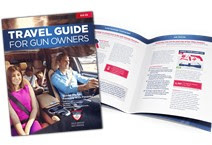 Know the Laws of Every State You Travel Through
Know the Laws of Every State You Travel Through
Traveling across state lines with a gun can be risky, and it is imperative to take the time to understand the laws of each state you are going to travel through with a firearm. Unfortunately, even if you have a license or permit to carry a handgun, another state may not recognize it. Additionally, some areas may not allow people to carry firearms in vehicles. It is very important to remember that when you are in another state, you are subject to that state’s laws, even pertaining to your Second Amendment rights.
There is no standardization of gun laws within the 50 individual states (not to mention Native American Reservations and Lands). In some states, it’s illegal for a non-resident to even possess a firearm in the passenger compartment of their vehicle.
Making it even more complex, different states have different laws regarding the Castle Doctrine, the duty to retreat (or stand your ground), and justification to use force or deadly force.
Air Travel with a Firearm
If you plan on flying with a firearm on a commercial airline, you must follow the TSA guidelines.
Any firearm you travel with must be unloaded and locked inside a “hard-sided container” that prevents outside access when it is locked. You can use any lock you’d like, but according to the TSA webpage, you must maintain possession of the key unless “TSA personnel requests the key to open the firearm container.” Whether the case is small enough to be placed inside another piece of luggage or the case is the luggage, it needs to be declared and checked.
Something else to be aware of (and this can be confusing for a traveler who reads the regulations and thinks “but wait, I thought I was supposed to not give up my key”) is that certain airports (Cincinnati/CVG, for instance) have placed their firearms screening area behind security. So, if for some reason the TSA needs to inspect the contents of your case and you are not using TSA-approved locks, you may be asked by non-TSA personnel to give up sole control of your key so that they can take it to TSA. To be clear, you may use any lock you like, and there are some security concerns with TSA-approved locks.
There is more than one airport that essentially forces you to temporarily give up your key if 1) the TSA selects your bag for additional screening, and 2) you are not using TSA-approved locks. So don’t be surprised if you find yourself in that situation. Some places will allow you to request a TSA agent come to the counter to get your key if you’re not comfortable giving it to airline personnel, but there is no guarantee that this option exists at all airports.
Ammunition needs to be “packaged” in a container “specifically designed to carry ammunition” safely. The factory packaging generally works well for this, but aftermarket solutions are also fine so long as the ammunition is not loose in your luggage or gun case. Any ammunition you travel with must be declared in a checked bag. Though it doesn’t have to be locked in the same case as your firearm, it’s not a bad idea to do so if your case has the room for it.
While the TSA allows for magazines to be loaded so long as they “completely enclose” whatever ammunition is in them, more than one air carrier prohibits this practice. As far as the magazines themselves go, even if they are empty, they must also be declared and in a container inside a checked bag.
When you make it to the check-in counter, let them know that you need to declare a firearm, and they will walk you through the check-in process. The ticketing agent will fill out an “unloaded firearm(s)” form for you to sign and date. Many times, the agent will want to ensure that the gun is unloaded, though in practice this often entails them simply asking you if it is unloaded. After you sign the form, they will direct you to place it in the case containing the firearm(s) and have you lock it in their presence.
Depending on the airport, they will either have you escort the case to a special TSA screening area or have you wait in a designated area while the case is going through the screening process. Once your checked bag containing your firearm(s) has cleared security, the rest of the pre-flight process is standard.
You must also know that all firearms, ammunition, firearm parts, magazines, bolts, firing pins, and replicas of firearms (including toys) must be in checked baggage. What can go in your carry-on? A rifle scope.
Before your trip, contact your specific airline(s) and ask what requirements they have for transporting firearms and if they have any additional restrictions beyond the TSA requirements. Make sure you arrive at the airport with plenty of time to go through the TSA declaration process.
Keep in mind if you do not follow these strict requirements, you could be subject to state criminal prosecution (a hefty fine and potential prison time) AND a civil fine of up to $10,000 per violation by the TSA.
As a reminder, you must always follow the laws of the state you are in. Flying into an airport is no exception. Practice extreme caution if your flight is diverted and lands in a gun-hostile state or in a state that does not recognize your license or permit to carry a handgun. When in doubt, do not take possession of your luggage. Above all, always check the local laws before taking possession of your firearm or attempting to carry.
What if I Only Take Trains or Buses?
It is possible to travel across state lines via train with a firearm, but it’s important to note that you need to check with your carrier(s) to see what their rules are. Some providers might require you to provide 24-hour notice via phone if you will be traveling with your firearm and arrive at least 30 minutes early to check your bags, and some providers will not allow a person to carry firearms on board. Some carriers do not want firearms at all—whether the item is carried or it’s unloaded, locked, and in checked baggage.
If you prefer to travel by bus, legally traveling with a firearm across state lines isn’t going to be an option. All the major bus lines appear to have an outright ban on firearms carried on-body, in a carry-on bag, and even in checked baggage.
Keep in mind these rules and restrictions apply to interstate travel. Some states have it written into state law that passengers may carry firearms on public transportation inside the state. For instance, Dallas Area Rapid Transit (DART) specifically notes on their website that state law allows passengers who meet the requirements to go armed on their buses, trains, and properties.
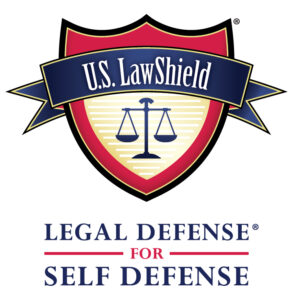 About U.S. LawShield
About U.S. LawShield
Since 2009, the mission of U.S. LawShield remains unchanged. We believe in Preserving Freedom for Good® by educating our 700,000+ members and 6,000+ industry 2A Partners in self-defense law; empowering them to handle critical, life-threatening situations with confidence; protecting them from potential injustices in the legal system after acts of self-defense; and challenging the status quo regarding the affordability of legal defense. Our higher purpose is to create a united community of responsible individuals who believe in liberty and the inalienable right of self-defense.
For more information on U.S. LawShield and its Legal Defense for Self Defense Program, visit the website at www.uslawshield.com.
Be sure to keep up with all the latest news.
Want more posts like this one? Subscribe to Guns & Tactics to receive email updates and special offers direct to your inbox!
Social Links:
– The views and opinions expressed on this web site are solely those of the original authors and contributors. These views and opinions do not necessarily represent those of Guns & Tactics, the administrative staff, and/or any/all contributors to this site.
– Affiliate Disclaimer: Guns and Tactics is reader/viewer supported. This post may contain affiliate links and we may earn a small commission when you click on the links at no additional cost to you. As an Amazon Affiliate I earn from qualifying purchases







